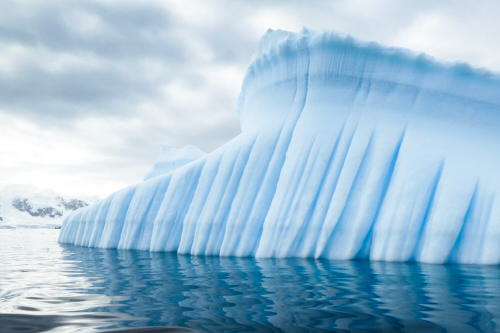West Antarctic Ice Sheet Collapse Could Be Stopped by Putting a Costa Rica-Size Pile of Snow on Top of It
Hannah Osborne
In order to prevent the collapse of the West Antarctic Ice Sheet, a pile of snow the size of Costa Rica could be placed on top of it, scientists have said.
The hypothetical plan – which researchers stress is not a proposal – would prevent sea levels from rising by over three meters, an event that would place many U.S. cities, including Miami and New York, underwater.
Published in the journal Science Advances, researchers from the U.S. and Germany assessed whether artificial snowfall could save the West Antarctic Ice Sheet – an area containing about 3.2 million cubic kilometers of ice.
While far smaller than the East Antarctic Ice Sheet, scientists are far more concerned about it because of how unstable it is. In 2014, researchers published evidence to suggest rapidly melting glaciers in West Antarctica, including Pine Island and Thwaites, are past the point of no return – and that there is nothing to stop them melting away into the sea. If the whole ice sheet were to collapse, it is estimated that sea levels would rise by 10 feet.
In the latest paper, researchers examined the possibility of stabilizing the ice sheet by piling snow on top of it by taking ocean water, freezing it and then spreading it over the frozen landscape using snow cannons. The additional snow, they suggest, would provide the ice sheet with a surface elevation needed to stabilize it.
Their models show that the show if they were to apply 7,400 Gigatonnes of snow across an area the size of Costa Rica over a 10-year period, the West Antarctic Ice Sheet could be stabilized. However, they are clear this is not a straightforward solution: “The practical realization of elevating and distributing the ocean water would mean an unprecedented effort for humankind in one of the harshest environments of the planet,” they wrote.

Anders Levermann, one of the study authors, stressed the idea of using artificial snow to stabilize the ice sheet should only be done if it was about to collapse anyway. He said what people fail to realize about the Paris Agreement – which aims to limit global warming to below two degrees Celsius on pre-industrial levels – is that even if we meet the targets set out, sea levels are still expected to rise by 16.4 feet. If the West Antarctic Ice Sheet were to be added to this, it would mean coastal cities and towns would either need to be abandoned or protected.
“It’s one of two options, when there is nothing else,” he told Newsweek. “We would be changing one place on the planet and that is West Antarctica in order to keep sea level rise limited. That would alter the ecosystem... no one wants that. But this would be altered anyway by the collapse of the ice sheet.”
He said there is no way to calculate the cost of such a project, but it would be “tremendously expensive,” adding that “Antarctica is the only untouched place on the planet. We would turn it into an industrial compound.”
Levermann said that generally he is extremely critical of geoengineering – the idea we could alter the climate by deliberately intervening in Earth’s natural systems. Their plan, he said, is just one option – but said it would be safer than other ideas proposed, such as solar radiation management, which involves manually reflecting sunlight away from Earth in order to reduce warming.
Another recent proposal to save Antarctica’s glaciers was put forward by Michael Wolovick, from Princeton, and John Moore, from the Beijing Normal University. They suggested building an enormous wall in front of a glacier – a project that would amount to “the biggest civil engineering projects that humanity has ever attempted.”
Commenting on the latest study, Moore, who was not involved in the research, said the simulations carried out as part of the artificial snow plan were reasonable. However, he said the problem is the engineering required is implausible. “Many people can think of solutions that might sound plausible but which require feats of engineering or consumption of resources that are untenable. I think this is one of them,” he told Newsweek.








